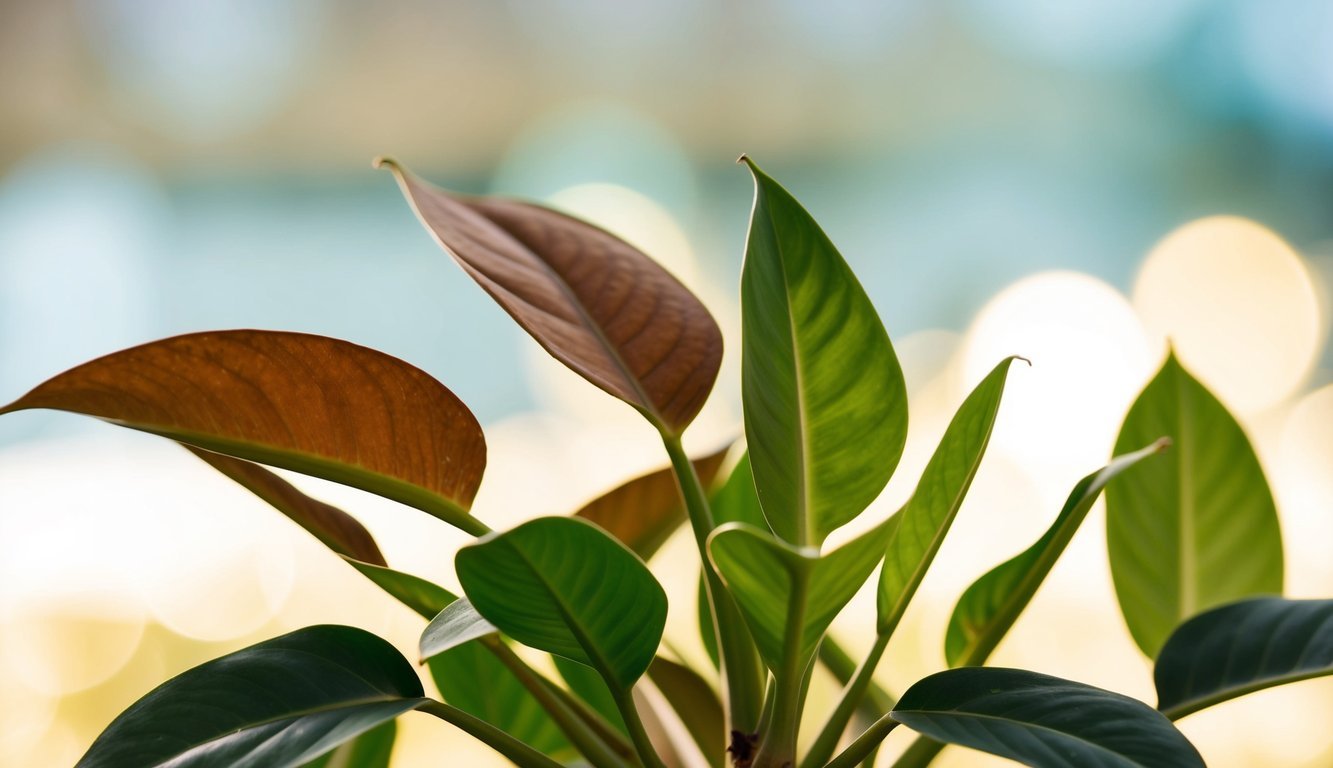
Philodendrons are beloved houseplants, admired for their unique looks.
From elegant trailing vines to the more robust upright varieties, these plants add vibrancy to any space.
But when you start to see brown leaves, it can be concerning.
In this article, we’ll explore the various reasons behind this issue and share effective solutions, based on insights from horticulturist and plant enthusiast Briana Yablonski.
With their striking deep green leaves, characterized by visible veins and a glossy sheen, philodendrons are not only easy on the eyes but also relatively low-maintenance—until they aren’t. If you’ve noticed brown tips or patches on your plant’s leaves, you’re definitely not alone.
Despite their hardiness, philodendrons can fall victim to several environmental factors that stress their foliage.
Identifying the Causes
The browning of your plant’s leaves can usually be linked to a few key elements, such as inappropriate ambient temperatures, dry conditions, or too much direct light.
Identifying the specific problem will empower you to take corrective action.
Let’s take a closer look at the common culprits that might be causing the browning of your philodendron’s leaves.
Key Factors in Proper Philodendron Care
When you see crispy brown edges or leaves turning a tan or rusty color, it’s time to play detective.
With over 600 species in the philodendron genus, each variety can have different physical attributes, growth patterns, and care requirements.
This means that knowing the specific type you own is crucial for keeping it healthy and happy.
- Not Enough Water
- Dry Indoor Air
- Too Much Sunlight
- Overheating
- Natural Aging Process
- Fertilizer Mismanagement
- Disease Issues
Implementing Corrective Actions
If your philodendron shows signs of browning, it could be thirsty.
Dry leaf tips often signal a lack of moisture.
When these plants don’t get enough water, their foliage can dry and become crispy.
You might also notice wilting or inward curling of the leaves, both of which are ways the plant conserves moisture during dry spells.
The soil may crumble and seem dry on the surface.
To keep your philodendron thriving, aim for slightly moist soil.
Water it when the top layer feels dry to the touch.
Pour water gently until it seeps through the drainage holes at the bottom of the pot, ensuring that the entire rooting medium is dampened.
While philodendrons thrive in warm tropical environments, extreme heat can quickly become problematic.
Prolonged exposure to temperatures over 90°F (32°C) can result in browning leaves, indicating stress.
The ideal temperature range for your plant is generally between 65-85°F (18-29°C).
Make sure it isn’t too close to radiators or other heat sources.
If you notice your plant wilting in a hot area, consider moving it to a cooler spot for a much-needed recovery.
By understanding the causes of browning leaves on your philodendron, you can identify problems early and implement effective solutions.
With the right care, your plant can continue to flourish and bring beauty to your home.
Source: Epicgardening

